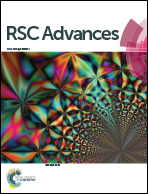Demonstration of efficient electrochemical biogas reforming in a solid oxide electrolyser with titanate cathode†
Abstract
Biogas reforming is a renewable and promising way to produce syngas. In this work, we demonstrate a novel strategy to directly and electrochemically convert CH4–CO2 into H2–CO. Electrochemical reforming of dry CH4–CO2 (1 : 1) mixture is successfully achieved in a 10 μm-thick titanate cathode with oxygen byproduct generated in anode in an oxide-ion-conducting solid oxide electrolyser under external voltages. In addition, loading iron nanocatalyst in titanate cathode or/and increasing applied voltages has further improved CH4–CO2 conversion. The highest methane conversion of approximately 80% is demonstrated for direct electrochemical reforming in cathode in contrast to the low conversion under open circuit condition in oxide-ion-conducting solid oxide electrolyser cathode.


 Please wait while we load your content...
Please wait while we load your content...